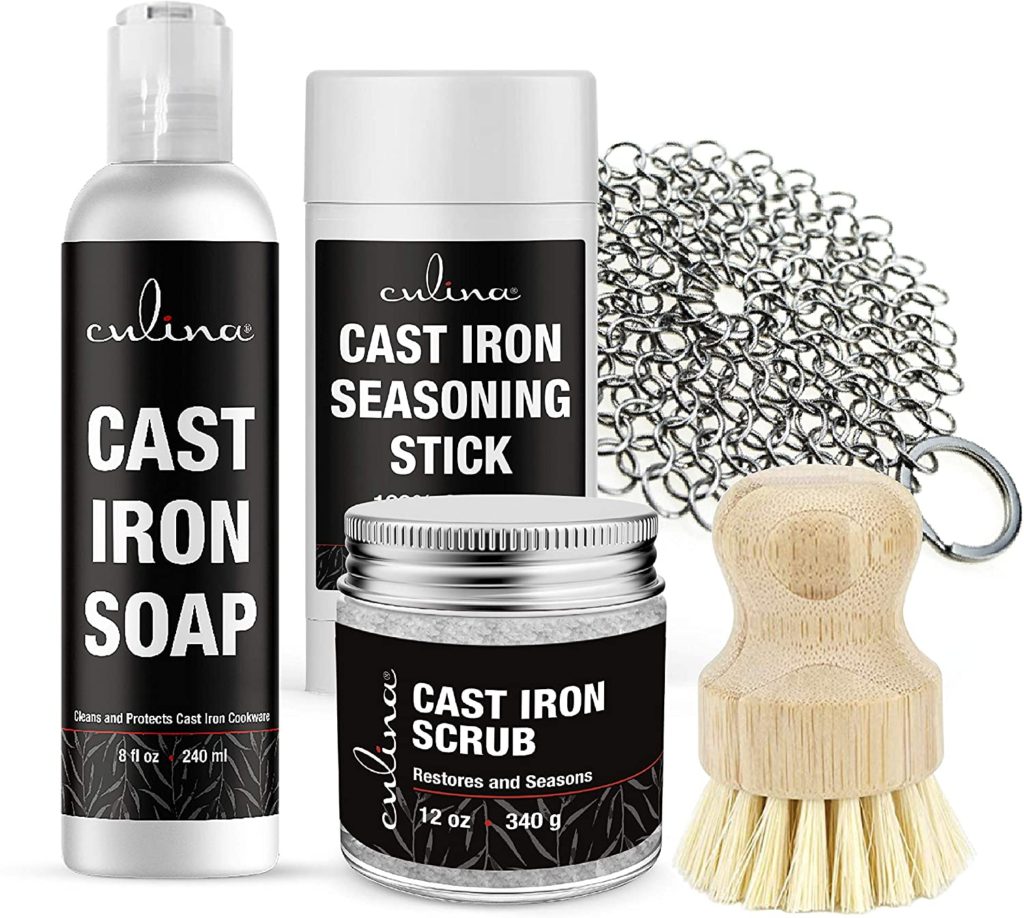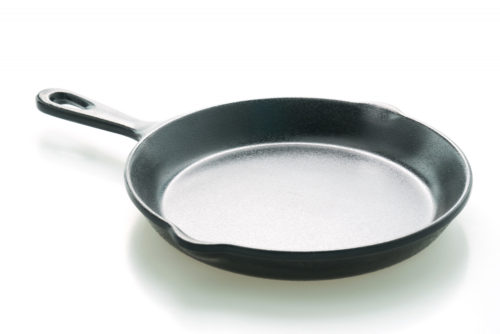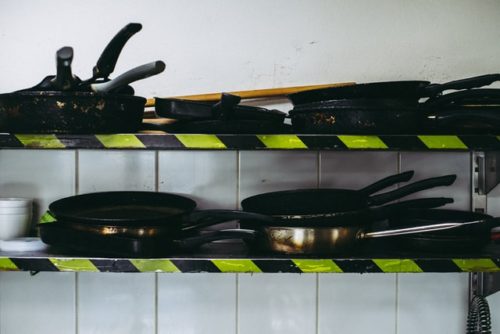Cast iron cookware is the most popular among other cooking ranges because its versatility and nonstick surface make it a lifetime investment. Cast iron comes in various designs and sizes to fulfill your kitchen requirements.
However, one additional step requires after cleaning to maintain cast iron skillets Seasoning. It is a simple procedure to nourish and bake your cast iron cookware with any edible oil to increase its performance and long life.
Cleaning A Cast Iron Skillet
Cleaning a cast iron skillet is a simple and easy process that will help you retain the original nonstick appearance of your cast iron for a lifetime. The following steps can use for this purpose.
1. Washing: You just can’t put your cast iron pans in the sink and forget about them. You have to wash them immediately by hand. You can use a little soap as well. If you think you need to simmer the pan in water, you can, but only for about 5 to 10 minutes to make the food stuck residues easily come off.
2. Scrubbing: Any dishwashing scrub can be used with a soft-bristled brush or a food scraper. Gently scrub the whole surface of your skillet to get rid of the stubborn residues.
3. Drying: Drying is a crucial step in cleaning cast iron cookware because they are prone to rust, so it is advised to completely dry cast iron utensils as soon as you clean them.
4. Seasoning: After the basic cleaning of cast iron cookware, Seasoning is recommended with any oil of your choice to increase its efficacy.
Why Is There a Need To Season Your Cast Iron?
Cast iron cookware is made with iron by melting its large pieces with a blast furnace. Cast iron has a bumpy and porous surface when it reacts with carbon and iron. Upon heating, the pores expand and prepare the surface for ideal cooking. Seasoning helps create a smooth nonstick surface by filling in the pores and bumps with oils used for Seasoning.
Seasoning Causes Polymerization
Over time, cast iron becomes smoother because of repeated Seasoning by filling all the uneven surfaces with the cooking oil by developing a layer of oil, and this process is called Polymerization. The long chains of fat molecules are broken down into smaller ones by making a new chemical compound. This new compound is a natural biopolymer that creates a smooth, non-sticky surface.
How To Do Seasoning?
To make your cast iron cookware happy and healthy, you must season it regularly and cook it in the same pan. Every time you add oil to your skillet, it will expand on heating, and Polymerization occurs to fill the uneven porous surface of cast iron and makes cooking a dream. It is a simple procedure that allows using any edible vegetable oil to pour all over the surface of a cast-iron skillet and bake it.
The seasoning temperature plays a significant role in a successful seasoning process. It would be best if you had the required temperature that allows the bonding of iron with oil but not too high that the oil produces smoke and turns into burnt carbon. A slow and steady cook time is required to heat the pan and oil.


Seasoning Guide
The following seasoning steps can be followed to do it successfully without messing and dripping oil.
1. Grab your cast iron and wipe any dirt or grease.
2. Preheat the oven to about 300°C.
3. Pour some oil into the pan. Approximately a teaspoon of oil, not too much that it starts dripping and not too less that it does not spread on the entire skillet surface. The recommended oils for Seasoning could be any edible vegetable oil with a high smoke point. Widely used are Grapeseed, Sunflower, or flaxseed.
4. Gently spread the oil with the help of a paper towel to evenly spread it all over the interior surface and walls of the entire cast iron skillet. Remember, cast iron has a porous surface, so you must rub it nicely for a few seconds to absorb it well in the pan.
5. Put your cast iron pan into the oven for at least 10 minutes.
6. Take it out and wipe away any excess oil that has come to the surface of your skillet.
7. Preheat your oven to 400°C, put the cast iron again inside the range, and bake it for about an hour.
8. Take it out with care as the cast iron will be hot to handle now.
9. Let it cool at room temperature.
10. Your cast iron skillet is now ready for cooking.
Cast iron skillets were originally the ‘nonstick’ cookware, which is still to this date. They are perfect for cooking anything because of their versatility and durability. You can cook whatever you like. It supports all types of cooking styles. You can even use it for baking pancakes, from sautéing your veggies to grilling your chicken. However, an additional seasoning step is required to maintain cast iron cookware’s overall health and lifespan.
.

There are different methods for Seasoning depending upon your choice and ease. Culina cast iron seasoning stick is all you need. It is made to make Seasoning simple and easy. Just one swipe of Seasoning stick inside the skillet and then spread it over using a paper towel. It is made with 100% natural ingredients and helps in Seasoning and restoring the nonstick appearance of your cast iron cookware.
Disclosure: This post contains affiliate links. As an Amazon Associate I earn from qualifying purchases, but there will be no extra charges to you. Thank you for your support!

